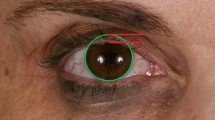Abstract
Background
In Taiwan, augmentation rhinoplasty and double-eyelid blepharoplasty are the most popular aesthetic procedures. Although aesthetic concepts vary for different races, the current concept of nasal and facial beauty shows a tendency to correspond to that for white people. The authors present their 10-year experience with a simple and practical approach of simultaneous blepharoplasty and rhinoplasty.
Methods
This study enrolled 255 consecutive patients who underwent simultaneous rhinoplasty and blepharoplasty between January of 1996 and December of 2005. All were Chinese in ethnic origin. The patients in the series were predominantly women. Only 10 were men. Five of the cases involved congenital palpebral anomalies including congenital entropion, congenital ptosis, and Down syndrome. A total of 245 patients had an adequate follow-up period longer than 5 years. The patients’ satisfaction and postoperative complications were recorded.
Results
Among the 245 patients receiving the balanced rhinoplasty, there were no cases of implant extrusion, displacement, or infection. Most of the patients (230/245 cases, 94%) were satisfied with their nasal and periocular shape.
Conclusions
The authors believe that simultaneous blepharoplasty and rhinoplasty are a simple and reliable method for effecting better results for Asians.








Similar content being viewed by others
References
Cho BC, Lee KY (2002) Medial epicanthoplasty combined with plication of the medial canthal tendon in Asian eyelids. Plast Reconstr Surg 110:293–300
Endo T, Nakayama Y, Ito Y (1991) Augmentation rhinoplasty: Observations on 1,200 cases. Plast Reconstr Surg 87:54–59
Jung DH (2006) Relationship of rhinoplasty and blepharoplasty. In: Proceedings of the 43rd Shimmian Rhinoplasty Hands-On Course, Seoul, Korea
Kao YS, Lin CH, Fang RH (1998) Epicanthoplasty with modified Y-V advancement procedure. Plast Reconstr Surg 102:1835–1841
Lee Y, Lee E, Park WJ (2000) Anchor epicanthoplasty combined with out-fold type double eyelidplasty for Asians: Do we have to make an additional scar to correct the Asian epicanthal fold? Plast Reconstr Surg 105:1872–1880
Liao WC, Tung TC, Lin CH, et al (2005) Celebrity arcade suture blepharoplasty for double eyelid. Aesth Plast Surg 29:540–545
Shirakabe Y, Shirakabe T, Kishimoto T (1985) The classification of complications after augmentation rhinoplasty. Aesth Plast Surg 9:185–192
Shirakabe Y, Suzuki Y, Lam SM (2003) A systematic approach to rhinoplasty of the Japanese nose: A thirty-year experience. Aesth Plast Surg 27:221–231
Tham C, Lai YL, Weng CJ, et al (2005) Silicone augmentation rhinoplasty in an Oriental population. Ann Plast Surg 54:1–5
Author information
Authors and Affiliations
Corresponding author
Rights and permissions
About this article
Cite this article
Liao, WC., Ma, H. & Lin, CH. Balanced Rhinoplasty in an Oriental Population. Aesth Plast Surg 31, 636–642 (2007). https://doi.org/10.1007/s00266-006-0137-1
Received:
Accepted:
Published:
Issue Date:
DOI: https://doi.org/10.1007/s00266-006-0137-1




